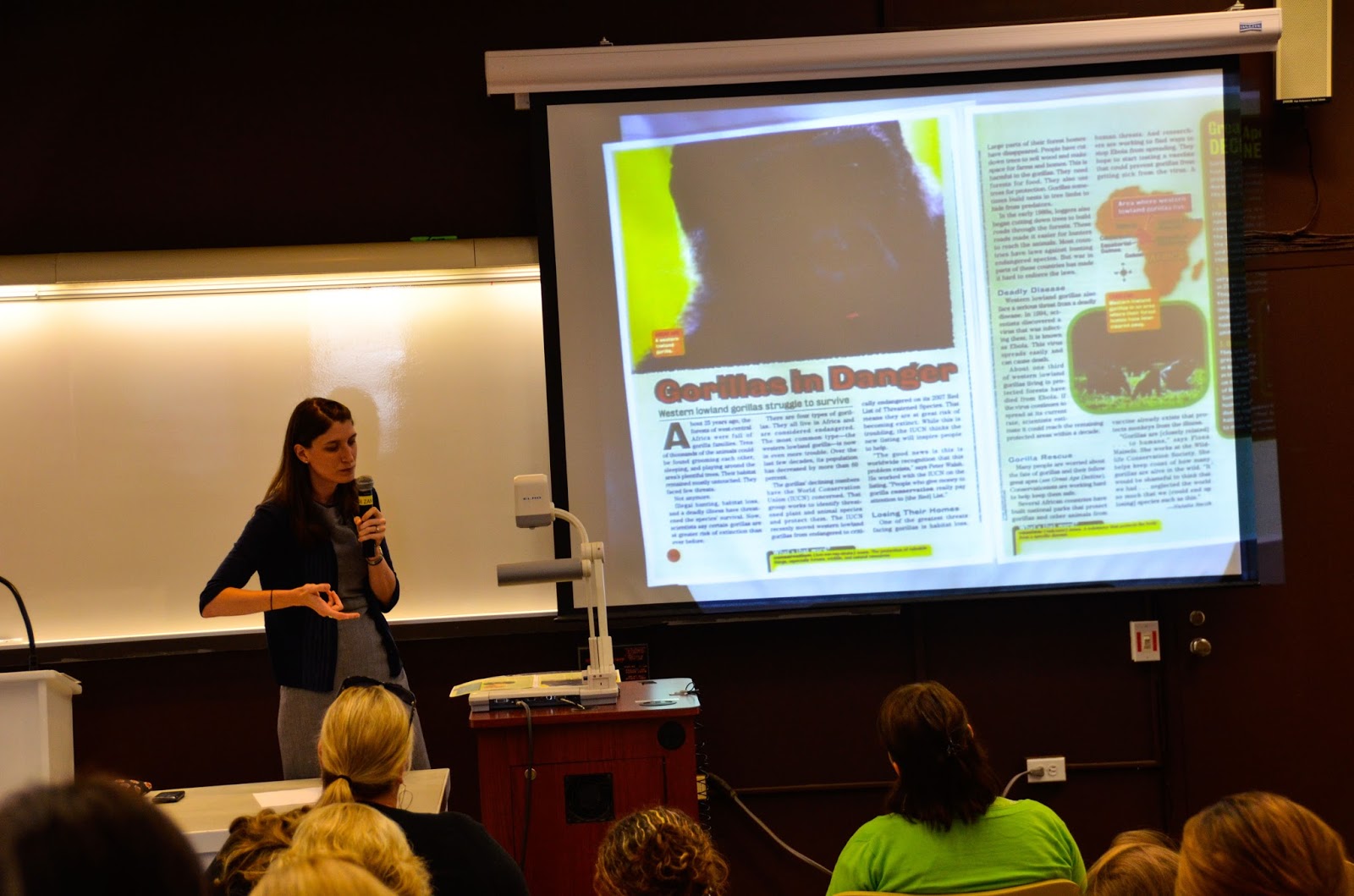Close Reading
So let's be honest here. I do have a fundamental understanding of what close reading is but I have been avoiding speaking the words out loud in conversations for a reason. I don't know if it's because I'm from the south, or because I got it confused with cloze reading in the beginning, but I didn't know if it was pronounced close (as in - close the door) or close (looking at something closely). Well now I know for sure. Look at that reading closely! |
| Kelly Hohne |
Kelly Hohne helped refine my thinking to seeing close reading as a way to see more in text than you did before to help you grow new thinking about it. Use different lenses to do this. Then they take these lenses to new texts. It’s not about understanding the text only. It's about learning to do something that you can do again on your own later.
When to do close reading? You don’t want to do it all the time or you will never finish reading! Do it purposefully. Maybe look across the introduction of texts, or maybe kids in book clubs might make a decision to do a close reading of this part where they think it is really an important part. Or maybe if there is a passage of text they think is not important, then why would the author choose to add it?
Think about why, what will kids get out of it, and how will this help my kids with other texts reading independently.
Stop at the part you want to look at closely and talk about why that part is powerful. Point out which part they can look at to support their thinking about that part. With informational text the author chooses illustrations, headings, subheadings and possibly even a word bank for a reason. Does that support your thinking about this important part you are looking at closely? Is the word choice helping make this part important?
Lenses to Use with Close Reading:
craft
relationships/interactions
point of view - What is the perspective of the author on this topic? What perspectives are included in this text? Missing?
language author used - How has the author used language? (Non-fiction - How have experts quoted in article used word choice?) What words stand out? Why jight the author have chosen these words? What do they show? Are the words creating a positive or negative tone?
text structure - How has the author organized the text? Why might he/she have made these choices?
 |
| Go close with very small portions of text |
As a teacher read the passage as a reader. Stop and then reread it and think what part do you want them to look at closely. What part do I want them to see more in....look at the standards and see what they need to work on. That’s the part you base the lesson on.
You may have the students take that portion of reading and write a response connecting their new thinking with evidence from the text.
Close reading can be used in a mini lesson, while conferring with students, in the closing of a workshop and during book clubs. When do you use close reading?
Cross posted on LIVE from the Creek

























0 comments:
Post a Comment